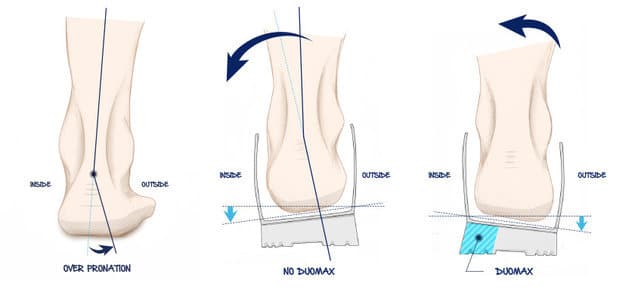Hey sneakerheads! Get ready to rewind and step into the ‘90s, an era that revolutionized sneaker culture like no other. This was a time when technological breakthroughs met audacious designs, resulting in a fleet of sneakers that made waves on the court, on the street, and on the feet of hip-hop and pop icons. These 90s Sneaker developments ushered in a new chapter in the book of sneaker tech, blending aesthetics, comfort, and performance in a way never seen before.
90s Sneaker Developments
Cushioning and Shock Absorption in the 90s
These technologies are designed to provide increased comfort and reduce the impact on the wearer’s foot during activities
Nike's Visible Air
The 90s marked the advent of Nike’s Visible Air technology. Initially launched in the late ’80s with the Air Max 1, it was the Air Max 90 and Air Max 95 in the ’90s that truly showcased the technology and made it iconic. This allowed wearers to not just feel the Air-Sole comfort but see it in action as well.
Nike's Zoom Air
Nike launched Zoom Air technology in the mid-’90s, using tightly stretched tensile fibers woven inside a pressurized Nike Air unit to create a highly responsive and lightweight cushioning system.
FILA's 2A Technology
FILA introduced 2A technology in the ’90s, providing extra cushioning and improving shock absorption for better performance in their athletic footwear. The Fila 97’s below were one of the earliest sneakers to utilise this technology.
ASICS Gel Cushioning
ASICS’ Gel Cushioning technology was a game-changer, offering exceptional shock absorption and comfort. Introduced in the ’80s, this tech became more advanced and widespread in their ’90s models, like the Gel-Lyte series.
New Balance's ABZORB Technology
New Balance introduced the ABZORB technology, a superior blend of cushioning and compression, providing excellent shock absorption.
90s Sneaker Development: Support and Stability
These 90s sneaker developments aimed to improve the stability of the shoe and provide greater support to the wearer.
Adidas Torsion System
Introduced in the late ’80s and gaining popularity in the ’90s, the Torsion System allowed the forefoot and rearfoot to move independently for better stability and support, particularly for runners and basketball players.
Nike Footbridge
Nike introduced the Footbridge technology in the mid-90s, which was designed to enhance stability by minimizing pronation. It was a TPU (thermoplastic polyurethane) component situated in the midfoot that bridged the lateral and medial sides of the shoe, thus the name “Footbridge”.
ASICS Duomax Support System
This system used a dual-density midsole to offer enhanced support and stability. The material on the inner (medial) side of the shoe was denser to prevent the foot from rolling inward excessively (overpronation).
New Balance's Rollbar Technology
Rollbar is a lightweight, flat or molded piece of graphite material positioned in the heel of the shoe. It helped stabilize the foot and control rear-foot movement to minimize pronation and supination.
Mizuno's Wave Technology
Introduced in the late ’90s, the Wave technology involved a thermoplastic wave unit running from the heel to the midfoot. The unique shape provided both cushioning and stability by evenly dispersing shock upon impact.
Unique Fit and Shape for 90s Sneakers
These technologies focus on creating a unique fit for the wearer or utilizing materials for innovative shoe shapes.
Reebok Pump Technology
The Reebok Pump was a revolutionary sneaker released in 1989, but it made waves in the ’90s with various adaptations. The Pump mechanism allowed wearers to inflate the shoe for a customized fit around the ankle and foot, a true revolution in terms of personalized comfort.
Puma Disc System
Puma released the first laceless sports shoe, the Puma Disc, in 1991. The disc-based closure system tightened the upper to provide a more comfortable, customized fit.
Nike's Foamposite Technology
Introduced in the late ’90s with the Air Foamposite One, this tech featured a seamless liquid foam mold that created a resilient and form-fitting upper. It offered superior lockdown and support, revolutionizing basketball shoe design.
Now you know all about Sneaker Developments in the 90s, why not discover the top styles too with our guide on the best 90s sneakers. Or, if you’re ready to own a piece of sneaker history, check out our guide on where to buy ’90s sneakers and find the best place to score these timeless treasures.
There you have it – the ’90s was a whirlwind of innovation in sneaker technology, pushing boundaries in design, comfort, and performance. From groundbreaking cushioning systems and stability advancements to unique fit solutions and material innovations, this era left an indelible mark on the sneaker world.
Brands like Nike, Adidas, Reebok, and others led the charge, each contributing revolutionary technologies that have since become staples in the sneaker industry. These pioneers elevated sneakers from purely functional athletic gear to an intricate fusion of style and science, shaping the sneaker culture we know and love today.







